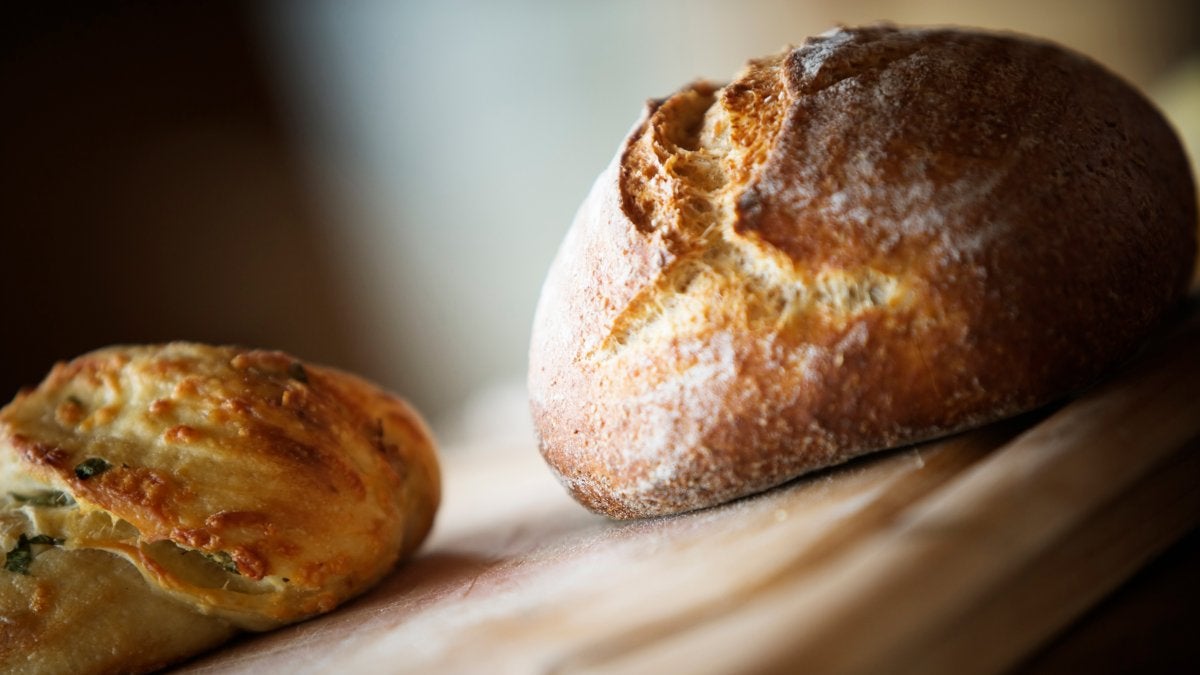No products in the cart.
Outdoor Adventure
We Found a High-Fiber Flour That’s Actually Tasty
Unless you’ve missed every single nutrition article since the early 1990s, you probably know that, in a nutritional face-off, a whole-wheat loaf beats Wonder Bread every time. Because it uses the entire wheat kernel, whole-wheat flour is higher in fiber. That means a slice of whole-wheat bread is less likely to spike your blood sugar than one made with white flour, and it will keep you feeling full longer, since fiber takes time to digest. It will also keep your GI tract moving along, since fiber is good for “regularity.” Additionally, whole-wheat flours tend to contain more vitamins and minerals, including selenium, an antioxidant that may reduce your risk of several common cancers, including breast and colon cancer; manganese, a trace mineral that may help build strong bones; and folate, a B vitamin that helps produce red blood cells.
The problem, though, is that whole-wheat flour tastes, well, healthy. That high fiber content weighs down breads and results in cookies that are toothsome, to put it gently. Some people may even find the taste of whole wheat ever so slightly bitter.
For years bakers have tried to find work-arounds. Many “whole grain” bread recipes use a mixture of wheat and white flours. Flour makers have tried to develop offerings that taste less like whole wheat. Then there’s King Arthur Baking Company’s Whole Grain Bread Improver, a mix of vital wheat gluten, soy flour, and inactive yeast that promises a better lift in even the heartiest loaves. While these innovations do improve baked whole-wheat products, the final results mostly retain their seventies-era, earth-mama, “would you like some carob chips with that” vibes.
Now, though, Bay State Milling, a Massachusetts-based grain company, says it’s hacked tasty, high-fiber flour once and for all. Its new product, called Flourish, claims to act just like white flour, even though it has just as much fiber as whole wheat. The secret, says Matthew Jacobs, director of strategic marketing at Flourish, is a special variety of wheat from Australia.
First, a quick lesson on the anatomy of a wheat kernel. On the exterior is the bran, which looks like a thin brown skin. On most wheat grown in the U.S., that’s where all the fiber resides. When you make whole-wheat flour, you mill the entire grain, including the bran. To mill white flour, on the other hand, you pull off the bran and just pulverize the inside of the kernel, which is called the endosperm.
Flourish uses a variety of wheat that scientists at the Commonwealth Scientific and Industrial Research Organisation (CSIRO), Australia’s national science research agency, began developing back in the 1990s. At the time, the Australian government recognized that its citizens weren’t getting enough fiber, so it set scientists to work trying to breed a better-tasting, fiber-packed wheat. According to CSIRO, two enzymes were identified that, when reduced in regular wheat, increased the total fiber content in the endosperm. Scientists then set about breeding wheat that was lower in these enzymes. In 2017, this wheat became commercially available to food manufacturers, and now it’s being offered to consumers in the form of flour for the first time. To make Flourish, the company strips the kernel of its bran, ensuring that it bakes and tastes like white flour. However, thanks to the fiber in its endosperm, it has a nutritional profile that’s even better than that of whole wheat. A 30-gram serving (about fourth a cup) of Flourish has six grams of fiber, while the same size serving of whole wheat has just three grams, and white flour has, at best, one gram (my bread flour doesn’t even list fiber on its nutrition label).
Even more remarkable is that the endosperm contains amylose starch, or “resistant starch,” which is a particularly healthy type, says Abby Langer, a Toronto-based registered dietitian and author of the book Good Food, Bad Diet. During digestion, resistant starch turns into short-chain fatty acids, which feed our gut microbiota, she says. While research on our gut microbiomes is an emerging field, having healthy gut microbes may improve immune-system function, help regulate weight, and aid overall digestion. Of course, Langer is careful to note that you can get resistant starch from a range of other foods too, like lentils and Jerusalem artichokes.
She also cringes when I tell her the price. Amazon is selling a five-pound bag of Flourish for $22.50. Why does it cost so much? Jillian Wishman, strategic marketing manager for Flourish, points to the fact that six years ago, the company had to begin building a whole new supply chain for this very specific wheat. That’s meant contracting directly with wheat farmers and guaranteeing a premium price for growing their product.
The real question, though, is whether it’s worth it. I plugged Flourish into the bread recipe I make each Sunday. Essentially, it’s a loaf that’s 70 percent white flour and 30 percent whole-wheat flour, with a little oatmeal thrown in for texture. I used Flourish in place of both the white and the whole-wheat flours, and because I was warned by Jacobs that “fiber loves water,” I increased the H2O in my trusty recipe just a bit. Normally it calls for two cups, but I added two and a quarter.
Two rises and a trip through a 350-degree oven later, I had a well-risen loaf begging to be sliced and slathered in butter. I have to admit, it did taste better than my normal white-and-wheat mix. It was a product more in line with a white-flour loaf.
The bottom line: If you do want to add more resistant starch to your diet, and you have the money to spare, this could be a great option. Just know that, like your bread dough, your grocery bill is gonna rise.
Lead Photo: Ronald R. Koeberer/Cavan
Source link

